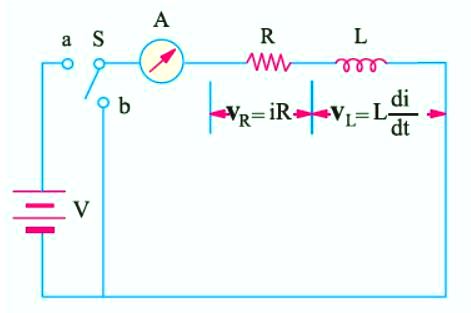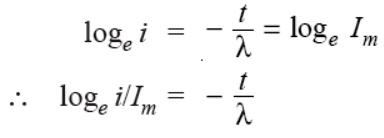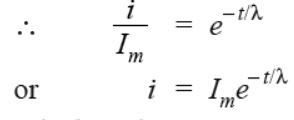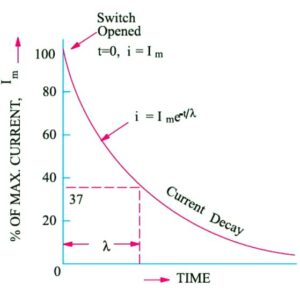Rise of current in Inductive Circuit
Rise of current in Inductive Circuit
In the figure given below, it is shown a resistance of R in series with a coil of self-inductance L henry, the two being put across a battery of V volt. The R-L combination becomes connected to battery when switch S is connected to terminal ‘a’ and is short-circuited when S is connected to ‘b’. The inductive coil is assumed to be resistanceless, its actual small resistance being included in R.
When S is connected to ‘a’ the R-L combination is suddenly put across the voltage of V volt. Let us take the instant of closing S as the starting zero time. It is easily explained by recalling that the coil possesses electrical inertia i.e. self-inductance and hence, due to the production of the counter e.m.f. of self-inductance, delays the instantaneous full establishment of current through it.
We will now investigate the growth of current i through such an inductive circuit. The applied voltage V must, at any instant, supply not only the ohmic drop iR over the resistance R but must also overcome the e.m.f. of self inductance i.e. Ldi/dt.


Multiplying both sides by (− R), we get 
Integrating both sides, we get ![]()
where e is the Napierian logarithmic base = 2.718 and K is constant of integration whose value can be found from the initial known conditions.
To begin with, when t = 0, i = 0, hence putting these values in (ii) above, we get
AdBlock-2
![]()
Substituting this value of K in the above given equation, we have

![]()
Now, V/R represents the maximum steady value of current Im that would eventually be established through the R-L circuit.
∴ i = Im (1 − e− t/λ) ……………………..(iii)
This is an exponential equation whose graph is shown in the figure given below. It is seen from it that current rise is rapid at first and then decreases until at t = ∞, it becomes zero. Theoretically, current does not reach its maximum steady value Im until infinite time. However, in practice, it reaches this value in a relatively short time of about 5λ.
The rate of rise of current di/dt at any stage can be found by differentiating Eq. (ii) above w.r.t. time. However, the initial rate of rise of

current can be obtained by putting t = 0 and i = 0 in (i) above.
![]()
The constant λ = L/R is known as the time-constant of the circuit. It can be variously defined as :
(i) It is the time during which current would have reached its maximum value of Im (= V/R) had it maintained its initial rate of rise.
![]()
But actually the current takes more time because its rate of rise decreases gradually. In actual practice, in a time equal to the time constant, it merely reaches 0.632 of its maximum values as shown below :
Putting t = L/R = λ in Eq. (iii) above, we get

(ii) Hence, the time-constant λ of an R-L circuit may also be defined as the time during which the current actually rises to 0.632 of its maximum steady value.
This delayed rise of current in an inductive circuit is utilized in providing time lag in the operation of electric relays and trip coils etc.
Decay of Current in an Inductive Circuit
When the switch S (Figure given below) is connected to point ‘b’, the R-L circuit is short-circuited. It is found that the current does not cease immediately, as it would do in a non-inductive circuit, but continues to flow and is reduced to zero only after an appreciable time has elapsed since the instant of short-circuit. The equation for decay of current with time is found by putting V = 0 in Equation given below.
![]()
![]()
Integrating both sides, we have
![]()
Now, at the instant of switching off current, i = Im and if time is counted from this instant, then t = 0
∴ loge Im = 0 + K
Putting the value of K in Eq (i) above, we get,



It is decaying exponential function and is plotted in Figure given below. It can be shown again that theoretically, current should take infinite time to reach zero value although, in actual practice, it does so in a relatively short time of about 5λ.
Again, putting t = λ in Eq. (ii) above, we get


Hence, time constant (λ) of an R-L circuit may also be defined as the time during which current falls to 0.37 or 37% of its maximum steady value while decaying.
Read article – time-constant
Visit NCERTplanet.com for NCERT solutions and Textbook downloads




